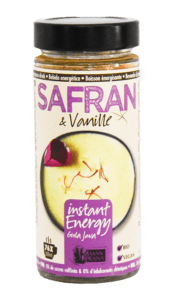Saffron is valuable
1000g dried saffron represents 85,000 to 150,000 flowers: two football fields full of saffron flowers and forty working hours to pick all these 150,000 flowers. 1000 g dried saffron represents approximately 150,000 to 400,000 pistils. The pistils need to be sorted from the harvested flowers. The saffron pistils contain a lot of moisture and must be dried quickly, but at a low temperature, in order to avoid fermentation. The pistils lose 80% of their weight when they dry out. 1000 g of picked pistils provide just 200 g of dried saffron pistils. That makes saffron precious.
Saffron fraud
Saffron is very expensive and a lot of fraud goes on. Saffron powder is often mixed with the cheaper turmeric and paprika powder. Saffron pistils are often mixed with dried red silk fibres, with the red or saffron-yellow safflowers, with calendula (marigold) – also called the saffron of the poor ‘zafferano dei poveri’, with pomegranate fibres and with the yellow, but scentless and tasteless, stamens.
Storing saffron
Saffron is best stored in dark, dry, airtight and cool conditions. Saffron can even be kept for several years in this way. Saffron is very sensitive to changing PH levels and breaks easily when it comes into contact with light and oxygen. This is why you should always store saffron in an airtight environment. Saffron can take a bit of heat, but moisture and light completely destroy it.
Beware: good and bad saffron
Sometimes in literature saffron is confused with ‘Colchicum autumnale’ (autumn crocus), a kind of lily which is very similar to the Crocus sativus. This lily flower contains colchicine which has a strong anti-inflammatory effect. However, because the difference between a therapeutic dose and a harmful dose is very small, Colchicum autumnale is rarely used.
Where does saffron come from?
90% of the total world production comes from Iran. Outside of Europe Kashmir, China, Afghanistan, Azerbaijan, Turkey and Morocco also produce saffron. Within Europe saffron is cultivated in Greece, France, Austria, Italy and Spain. Saffron is also cultivated on a small scale in Belgium and the Netherlands. Tourists in Mediterranean countries often buy Iranian saffron without realising it.
The origin of saffron in saffron & vanilla
The sports drink Saffran & Vanilla from Amanprana is a combination of organic Gula Java coconut blossom sugar, vanilla and saffron.
Why should you choose Amanprana sports drinks?
- 100% natural
- 100% organic
- Low glycemic index (GI 35)
- Without refined sugar and without artificial sweeteners
- Fair trade & Fair World
- Delicious new generation of sports drinks
- Pure nature, free from additives
- Rich in antioxidants
- High ORAC value
- Gula Java coconut blossom sugar as a basis
Instant performance drink with saffron & vanilla
Saffran & Vanille
 Read more about Saffran & Vanille
Read more about Saffran & Vanille
